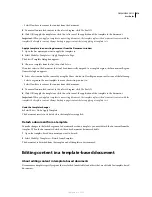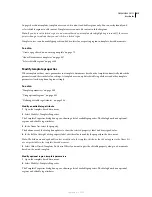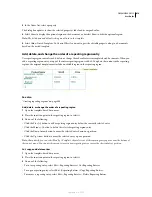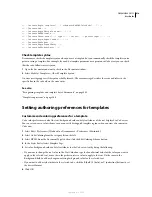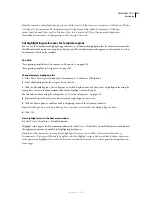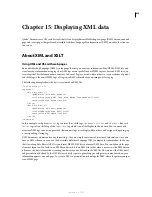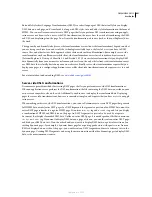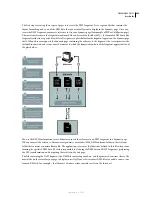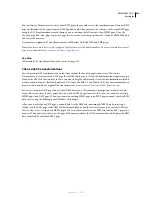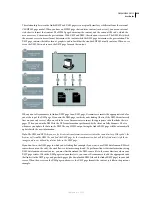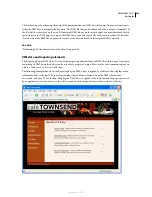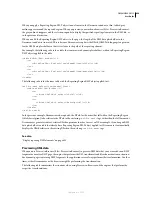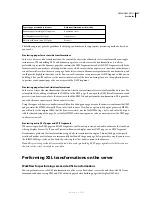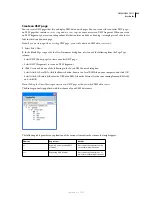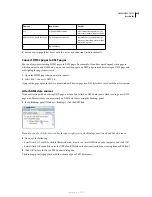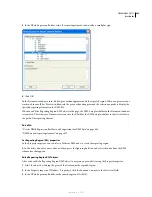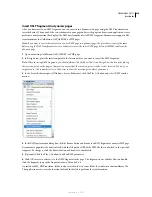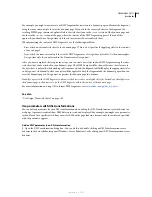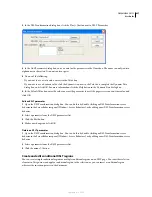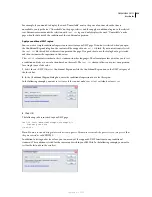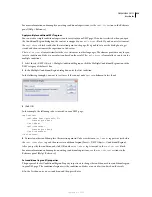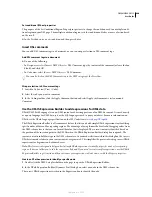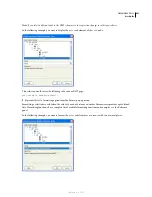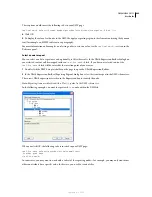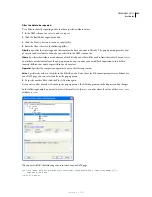
DREAMWEAVER CS3
User Guide
428
Note:
Your server must be correctly configured to perform server-side transformations. For more information, contact
your server administrator, or visit
www.adobe.com/go/dw_xsl
.
The general workflow for performing server-side XSL transformations is as follows (each step is described in other
topics):
1. Set up a Dreamweaver site.
2. Choose a server technology and set up an application server.
3. Test the application server.
For example, create a page that requires processing, and make sure that the application server processes the page. For
a tutorial on how to do this, visit
www.adobe.com/go/dw_xsl
.
4. Create an XSLT fragment or page, or convert an HTML page to an XSLT page.
•
In your Dreamweaver site, create an XSLT fragment or an entire XSLT page.
•
Convert an existing HTML page to an entire XSLT page.
5. Attach an XML data source to the page.
6. Display XML data by binding the data to the XSLT fragment or to the entire XSLT page.
7. If appropriate, add a Repeating Region XSLT object to the table or table row that contains the XML data
placeholders.
8. Insert references.
•
To insert a reference to the XSLT fragment in your dynamic page, use the XSL Transformation server behavior.
•
To insert a reference to the entire XSLT page in the dynamic page, delete all of the HTML code from a dynamic
page, and then use the XSL Transformation server behavior.
9. Post the page and the fragment.
Post both the dynamic page and the XSLT fragment (or entire XSLT page) to your application server. If you are using
a local XML file, you will need to post that as well.
10. View the dynamic page in a browser.
When you do so, the application server transforms the XML data, inserts it in the dynamic page, and displays it in
the browser.
See also
“Setting up a Dreamweaver site” on page 40
“Choosing your application server” on page 502
“Using XML and XSL with web pages” on page 420
“Client-side XSL transformations” on page 423
“Server-side XSL transformations” on page 421
September 4, 2007

